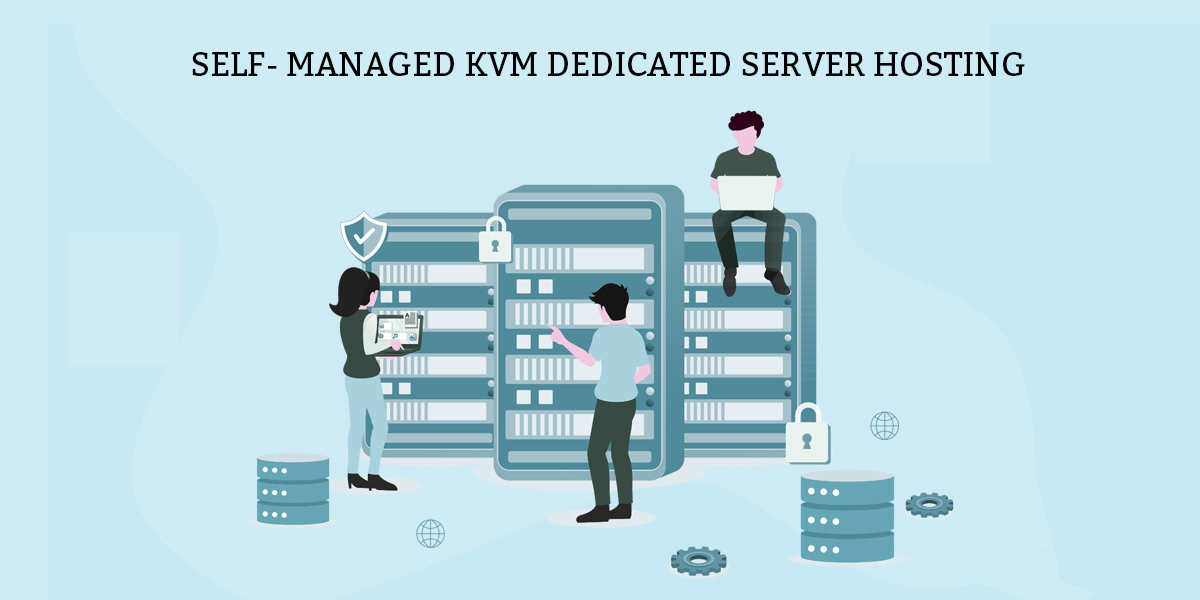
As a result of the pandemic, businesses are making a move to an outsourced hosting platform. One of the most popular platforms because of its cost and flexibility is the Virtual Private Server (“VPS”). One concern that is often expressed is managing the virtual environment, and possibly, several environments later on.
The KVM virtual dedicated server environment settles those concerns. KVM stands for Kernel-based Virtual Machine. It provides a graphical interface to the standard management tools available in both Open Systems and Windows versions. This is a simple management interface that goes a long way to resolving the management issue and allows a business to self-manage its server environment using its own staff. Get more information to know How to Self-Managed KVM Dedicated Server Hosting.

What is fully Self-Managed hosting?
Self-managed web hosting gives your website a complete control manage, where you have your server, then control it yourself, BTW it is perfection to manage/ control it in a way that’s right for you with full root managed “management, support and administration of the server. Fully managed resources are easy, so do not worry about the fixes or patches. AWS control it all. In short, you can even let the agent instead of you handle these types of issues to protect your website/ yourself legally.
What is VPS stands for?
VPS stands for Virtual Private Server. In recent years, it has become increasingly popular, particularly among managed service providers, because of its flexibility and ability to support the most common operating systems and applications in secure virtual servers.
Full coverage for the KVM environment?
KVM is part of the primary Linux OS kernel and is Open Source software. It comes with the Linux kernel, and it can be installed as part of the initial installation or added on later. Today, it provides a full virtualization environment for both Intel and AMD processors only and the mainline Linux kernel at level 2.6.20 or above.
It supports several guest operating systems, including Windows, BSD, Solaris, and Linux. Each Virtual Machine (“VM”) has its own virtual resources allocated and managed by KVM.
An advantage for service providers, who have both Windows and Open Systems applications, is that a KVM environment allows you to have both Linux and Windows dedicated virtual servers running on the same physical server. Because each VM is complete with its own private virtualized hardware, each virtual server is entirely independent and acts as a dedicated physical server.
A server can be shared between different clients, or dedicated to a single client. The single client can be one virtual KVM server, or several that meet different business requirements.
In essence, KVM operates as a Type 2 Hypervisor.
What are the advantages of a KVM virtual dedicated server?
- As part of the Linux kernel, it’s free, open-source software.
- Again, as part of the kernel, it is fully integrated with the OS.
- Once again, as part of the kernel, it is fully integrated with the OS and uses the Linux SE advanced security system. The SE security environment gives users the comfort that it is a high-security environment.
- Adaptability, Being open-source, it can be modified to meet exact business requirements.
- A significant advantage, and one that is very relevant today, is that most Linux and other open-source cloud-based automation software solutions use KVM as a default hypervisor.
- KVM also provides a significant degree of future-proofing. First that you will, in all probability, not need to change the KVM support environment in the future, and second, upgrades and patches won’t introduce incompatibilities.
- Because it is fully integrated into the kernel, moving from a virtual machine on a shared server to a dedicated server is a simple process.
One disadvantage of a KVM virtual dedicated server is that It can be complicated to set up and needs a lot of preparation. But, hopefully, you only do that once yourself or hand it over to a managed service provider. In some cases, the application software itself carries out the KVM configuration.
The inbuilt KVM management tools allow an organisation to install the KVM environment and virtual server(s) themselves and self-manage the server afterwards. For users managing their own VPS environment, in addition to the flexibility and security benefits, it reduces the complexity and hence management resource requirements and cost.
